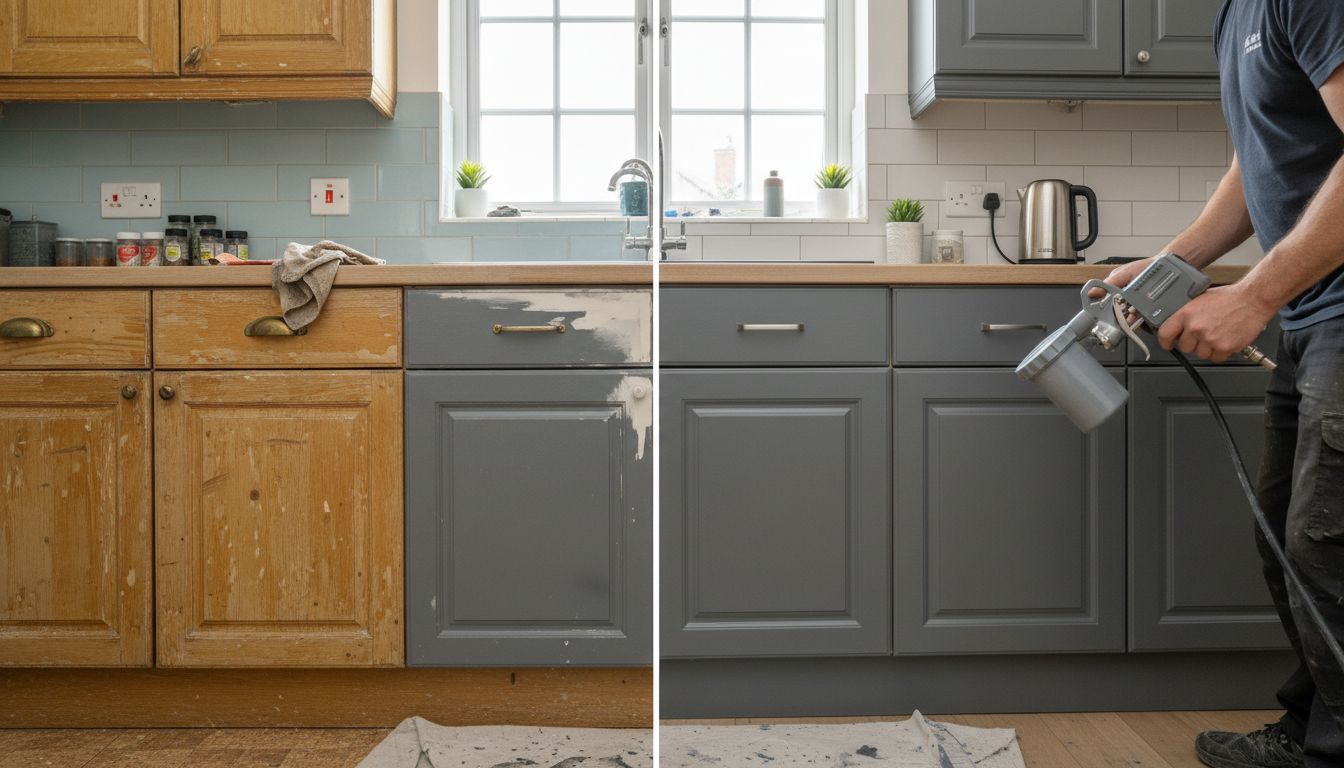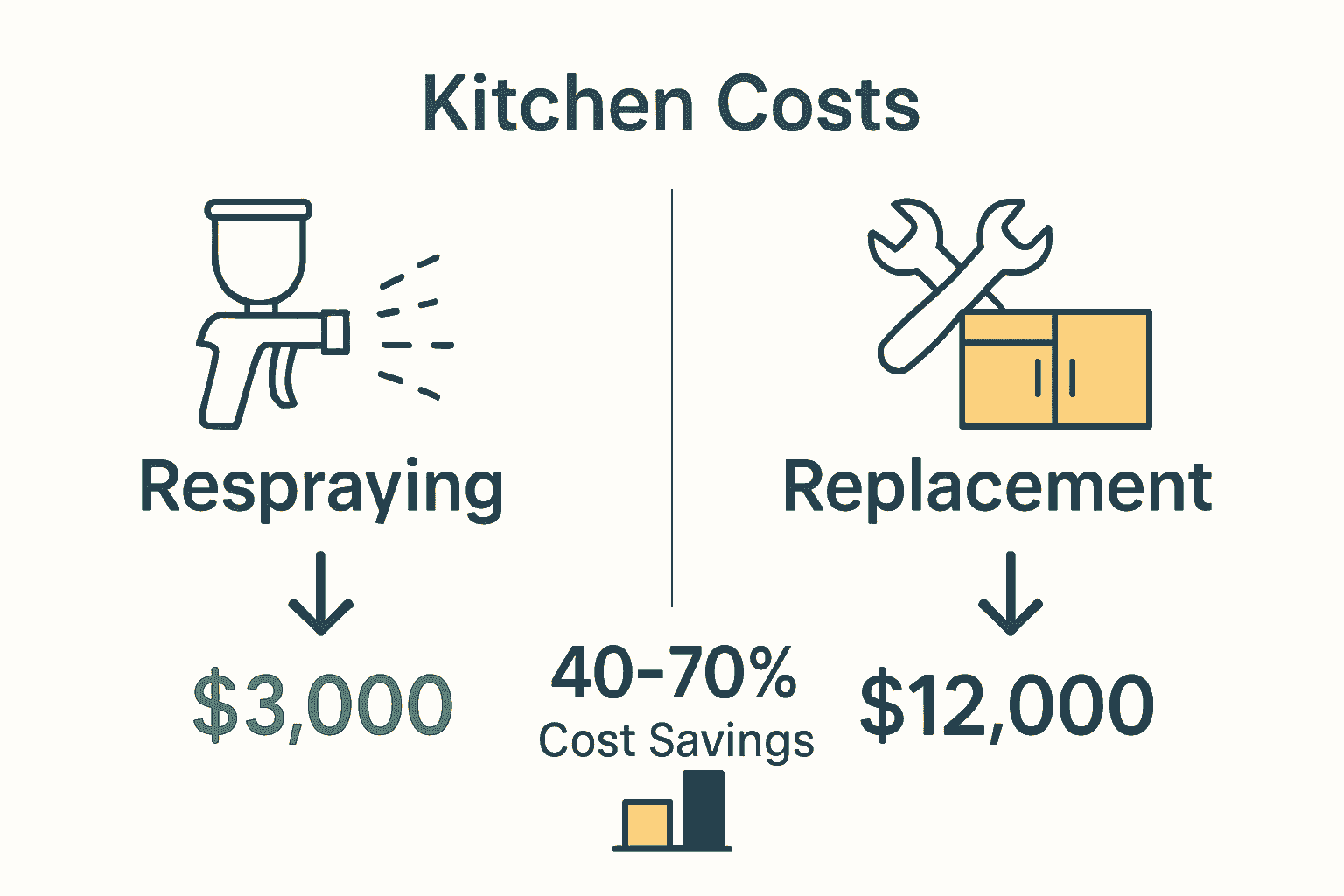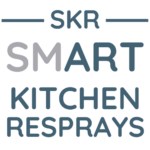Kitchen Respray Cost Breakdown: Master the Full Process
Over half of UK homeowners consider kitchen updates every year, yet many feel overwhelmed by the choices and costs. If your kitchen looks tired but the cabinets are still sturdy, respraying could offer a dramatic transformation at a fraction of the price of full renovation. This guide breaks down the essential steps and practical tips to help you confidently plan a kitchen respray that fits your budget and delivers lasting results.
Table of Contents
- Step 1: Assess Your Kitchen’s Respray Suitability
- Step 2: Identify Key Cost Factors And Options
- Step 3: Request And Compare Detailed Quotes
- Step 4: Plan Your Budget And Timeline Accurately
- Step 5: Verify Quality And Final Costs After Completion
Quick Summary
| Key Point | Explanation |
|---|---|
| 1. Assess kitchen suitability for respray | Inspect cabinets for minor wear and damage; ensure structural integrity before considering a respray. |
| 2. Understand cost factors before starting | Evaluate size, cabinet condition, and finish type to accurately budget for your respray project. |
| 3. Obtain and compare multiple quotes | Secure quotes from at least three specialists, ensuring detailed breakdowns to assess comparable services and costs. |
| 4. Plan budget and timeline effectively | Allocate funds for all aspects, including contingencies, and schedule the project during low-disruption times. |
| 5. Verify quality and costs post-completion | Conduct thorough inspections and compare final invoices to ensure the work meets expectations and no unexpected charges are present. |
Step 1: Assess your kitchen’s respray suitability
Before diving into a kitchen respray project, you need to carefully evaluate whether your kitchen is a good candidate for this transformative process. A thorough assessment will help you determine if respraying is the right solution for your space and budget.
Start by conducting a comprehensive visual inspection of your kitchen cabinets. Look for signs that indicate respraying might be an excellent option. These include minor surface wear, outdated colour schemes, or superficial damage that hasn’t compromised the structural integrity of your cabinetry. You want surfaces that are fundamentally sound but aesthetically tired.
 Check for issues like chipped paint, faded finishes, or areas where the original colour has discoloured or become dull.
Check for issues like chipped paint, faded finishes, or areas where the original colour has discoloured or become dull.
To make an informed decision, consider three key factors. First, assess the material of your kitchen units are they wooden, laminate, or MDF? Different materials respond differently to respraying techniques. Second, evaluate the current condition of the surfaces. Smooth surfaces with minimal damage are ideal candidates. Third, examine the overall kitchen layout. Kitchens with relatively standard cabinet configurations tend to be more straightforward for respraying. By taking a methodical approach, you can determine whether a respray will breathe new life into your kitchen without the expense of a full replacement. For deeper insights into kitchen respray best practices, check out our guide to kitchen respray best practices.
Warning: Not all kitchens are suitable for respraying. Severely damaged, rotting, or extensively warped units might require complete replacement rather than a respray.
Step 2: Identify key cost factors and options
Understanding the cost factors of a kitchen respray is crucial for planning your budget and setting realistic expectations. This step will help you break down the financial considerations and explore the various options available for your kitchen transformation.
As Fisher & Fisher highlights, the primary cost determinants include the number of doors and drawers, along with the specific finishes you choose. Beyond these core elements, several additional factors will influence your overall project cost. The size of your kitchen plays a significant role small kitchens will naturally cost less than larger spaces with more cabinet surfaces. Material complexity matters too different surfaces like wooden, laminate, or MDF units require varying levels of preparation and specialised spraying techniques.
Let’s break down the key cost variables you’ll encounter. Kitchen size determines base pricing typically calculated per square metre.
Cabinet condition is another critical factor surfaces requiring extensive prep work like filling chips, sanding, or addressing previous paint layers will increase labour costs. Finish selection also impacts pricing standard colours are more affordable, while metallic, high gloss, or custom colour matches will be more expensive. Consider your budget carefully and prioritise which aspects matter most to you a full respray might cost between 40% to 70% less than a complete kitchen replacement.
 For a comprehensive understanding of pricing, our cost of kitchen respraying guide provides detailed insights into UK market rates.
For a comprehensive understanding of pricing, our cost of kitchen respraying guide provides detailed insights into UK market rates.
Warning: Always get multiple quotes and ensure professionals provide a detailed breakdown of costs to avoid unexpected expenses during your kitchen respray project.
Step 3: Request and compare detailed quotes
Securing multiple quotes is a critical step in your kitchen respray journey. This process will help you understand market rates, compare service offerings, and make an informed decision that balances quality and affordability.
Fisher & Fisher recommends contacting specialists directly to discuss your specific kitchen respray requirements. When requesting quotes, prepare comprehensive information about your kitchen to ensure accuracy. Gather precise measurements of your kitchen space, count the exact number of cabinet doors and drawer fronts, and take clear photographs showcasing the current condition of your units. Professional resprayers will use these details to provide more precise estimates.
Develop a systematic approach to quote comparison. Request quotes from at least three reputable kitchen respray specialists. Ensure each quote includes a detailed breakdown of costs covering surface preparation, materials, labour, and final finish. Pay attention to what is included in their standard package some providers might offer additional services like minor repairs or edge sealing. Look beyond the total price examine the scope of work, estimated completion time, and warranty provisions. Consider factors such as the quality of paint used, preparation techniques, and the professional’s experience with your specific kitchen material. Our kitchen respray best practices guide can help you understand what to look for in a professional service.
Warning: The cheapest quote is not always the best option. Prioritise quality, expertise, and comprehensive service over the lowest price to ensure a successful kitchen transformation.
Step 4: Plan your budget and timeline accurately
Careful budgeting and timeline planning are essential for a smooth kitchen respray project. This step will help you create a realistic financial and scheduling framework that minimises stress and unexpected complications.
Fisher & Fisher provides valuable insight into project timelines, noting that their Premium Spray Package typically requires 7 to 10 days total with approximately 2 days of actual on-site work. Use this benchmark to structure your own project expectations. When budgeting, allocate funds not just for the respray itself but also for potential additional expenses. Create a contingency fund of 15 to 20 percent above the quoted price to cover unexpected preparatory work, minor repairs, or last minute design adjustments.
Break down your budget into clear categories to maintain financial control. Primary expenses will include surface preparation, professional labour, specialist paint materials, and finishing treatments. Consider indirect costs like temporary kitchen storage if needed, potential meal replacement expenses during the project, and any protective coverings or temporary kitchen arrangements. Timing is crucial schedule your respray during a period with minimal household disruption perhaps during a holiday or when fewer family members are at home. For more comprehensive financial planning, refer to our cost of kitchen respraying guide for detailed UK market insights.
Warning: Never compromise on quality to save money. A poorly executed respray can cost more to fix than investing in a professional service from the start.
Step 5: Verify quality and final costs after completion
The final stage of your kitchen respray project is a critical moment where you ensure every detail meets your expectations. This step involves a comprehensive review of the completed work, focusing on both visual quality and financial accuracy.
Fisher & Fisher emphasises the importance of a detailed verification process after the respray is complete. Start by conducting a thorough visual inspection under different lighting conditions. Check every cabinet door, drawer front, and exposed surface for consistency in colour, smoothness of finish, and absence of imperfections. Look closely for any drips, uneven coverage, or areas where the original surface might be visible. Use natural daylight and artificial lighting to reveal any potential flaws that might have been missed during the initial application.
Carefully compare the final invoice against the original quote to ensure all agreed upon services have been completed and accurately charged. Review the breakdown of costs line by line, confirming that there are no unexpected additional charges. Pay special attention to any preparatory work or minor repairs that might have been necessary during the process. If you notice any discrepancies or are unsatisfied with any aspect of the work, discuss them professionally with the specialist immediately. Our kitchen respray best practices guide provides additional insights into what constitutes quality workmanship.
Warning: Document everything thoroughly. Take clear photographs of any issues you identify and communicate with the respray specialist in writing to ensure a clear record of your concerns.
Transform Your Kitchen with Confidence and Clear Costs
Understanding the full process and cost breakdown of a kitchen respray can be challenging. From assessing your kitchen’s suitability to securing the right quote, every step matters to achieve a stunning finish without hidden expenses. If you want to avoid unexpected costs and get professional results, aligning your goals with expert services is essential. Our kitchen respray experts specialise in in-situ transformations that preserve your kitchen’s structure while delivering a fresh new look.
Discover how to master your kitchen respray journey with trusted insights and reliable support. Visit our Uncategorized Archives for detailed guides and tips that complement your planning.

Don’t let uncertainty delay your kitchen update. Explore professional services designed to meet your needs at SKR Specialists. Get your tailored quote today and step confidently towards a beautifully resprayed kitchen that fits your budget and lifestyle. Learn more about managing costs from start to finish on our main site. Start your project with clarity and expert care now.
Frequently Asked Questions
What are the main factors that affect kitchen respray costs?
The main factors that influence kitchen respray costs include the size of your kitchen, the number of doors and drawers, and the materials used for your cabinetry. Evaluate these elements to create a more accurate budget for your project.
How can I determine if my kitchen is suitable for a respray?
To assess if your kitchen is a good candidate for a respray, inspect the condition of the cabinets for minor wear, outdated colors, and superficial damage. Look for signs like chipped paint and faded finishes, as these can indicate that a respray will be effective.
How should I budget for unexpected costs during the respray process?
When budgeting for a kitchen respray, add a contingency fund of 15% to 20% above the quoted price to cover any unexpected repairs or additional prep work. This ensures you’re prepared for potential surprises without straining your budget.
What should I look for when comparing quotes from respray specialists?
When comparing quotes, focus on the breakdown of costs, including surface preparation and final finishes. Request details on the scope of work, estimated completion time, and warranty provisions to ensure you are making an informed decision.
How long does a typical kitchen respray project take?
A typical kitchen respray project can take between 7 to 10 days, with about 2 days of actual on-site work needed. Plan your schedule accordingly to minimize disruption to your living space.
How can I verify the quality of the completed respray?
To verify quality, conduct a thorough inspection of the finished work, checking for consistency in color and finish under different lighting conditions. Document any imperfections and discuss them with the specialist to ensure proper resolution.
